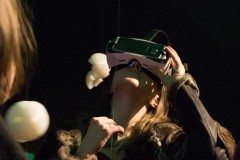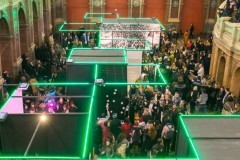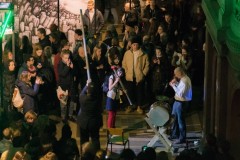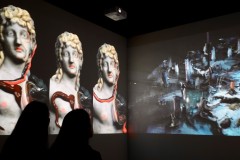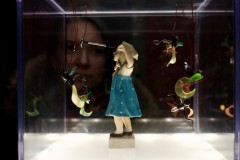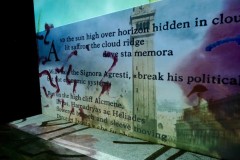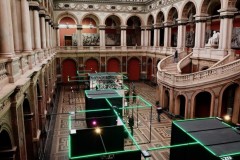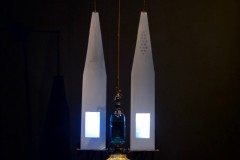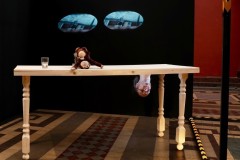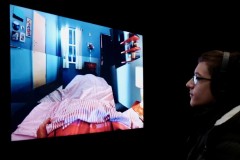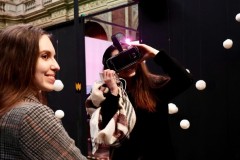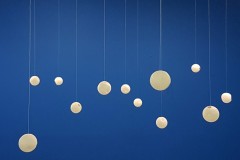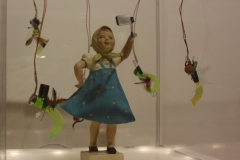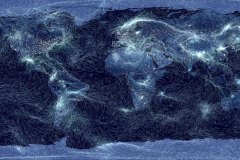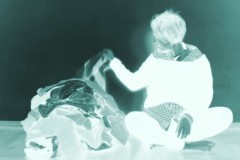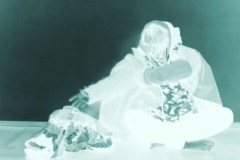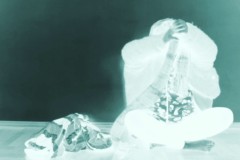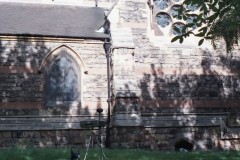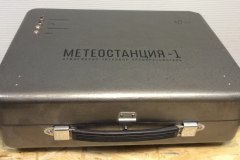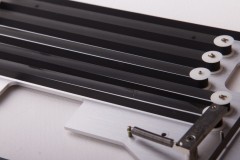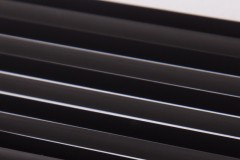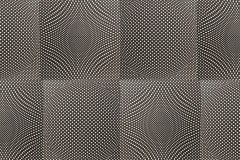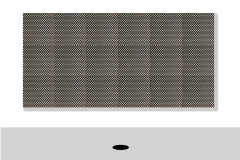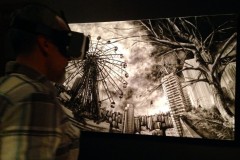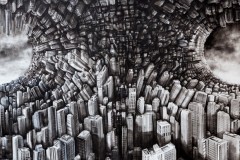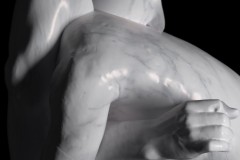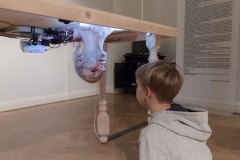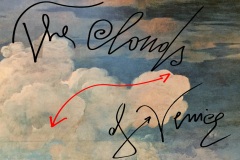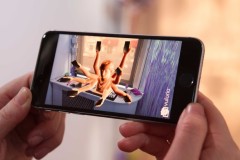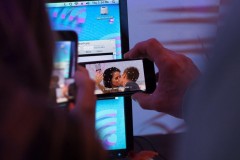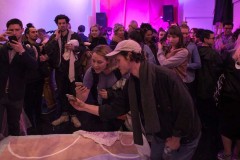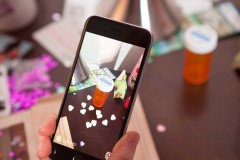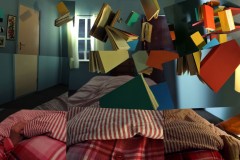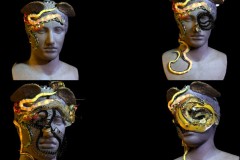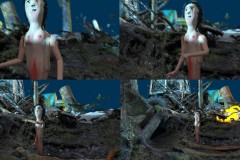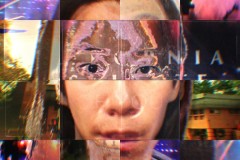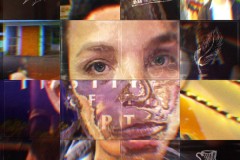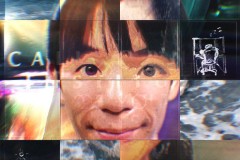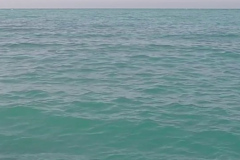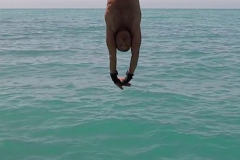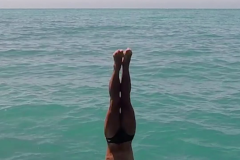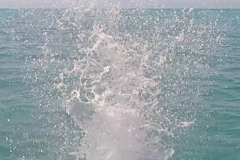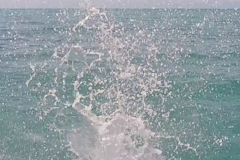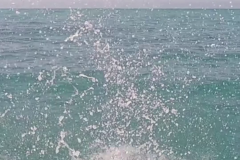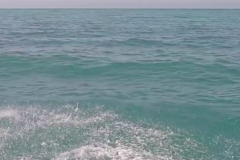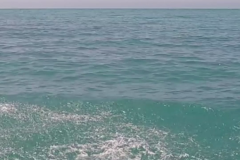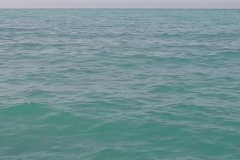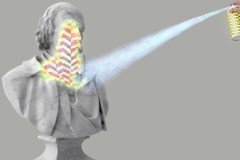WEATHER FORECAST: DIGITAL CLOUDINESS
EXHIBITION PROJECT
February 2–12
St. Petersburg Stieglitz State Academy of Art and Design
Сurated by Anna Frants (Russia-USA), Elena Gubanova (Russia)
Сo-curated by Varvara Egorova (Russia), Isabella Indolfi (Italy), Silvia Burini (Italy), Giuseppe Barbieri (Italy), Vlad Strukov (UK), Natalia Fuchs (Russia)
Photography by Anton Khlabov, Mikhail Borisov
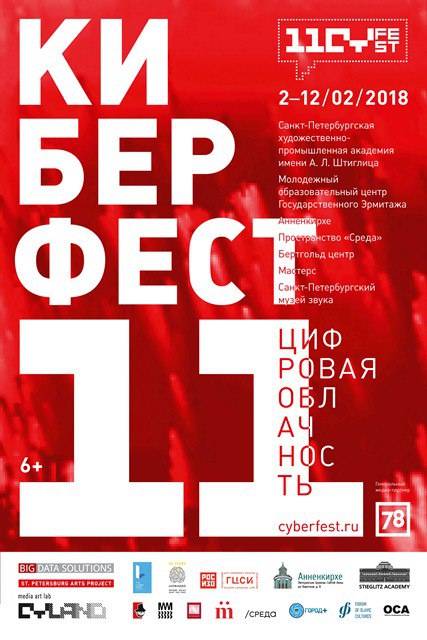
PARTICIPANTS
Oğuz Emre Bal (Turkey)
Ludmila Belova (Russia)
Maurice Benayoun (France/China)
Iuliia Vergazova (Russia)
Alexey Grachev (Russia)
Ivan Govorkov (Russia)
Elena Gubanova (Russia)
Fabio Giampietro (Italy)
Sergey Komarov (Russia)
Egor Kraft (Russia)
Donato Piccolo (Italy)
Marco Nereo Rotelli (Italy)
Nicole Ruggiero (USA), Molly Soda (USA), Refrakt (Germany)
Christine Hooper (UK)
Alexander Shishkin-Hokusai (Russia)
Shih-lien Yen (Taiwan)
ArXeNeKrOHeN (Russia)
Universal Everything (UK)
WORKS
Oğuz Emre Bal (Turkey) – İÇLEK
Interactive sculpture, 2017
The project titled “İÇLEK” which roughly translates as “belonging to the inside” looks at how we experience and conceptualize different spaces and spatial encounters. It queries our understanding of interiority and exteriority by drawing out attention to surfaces and movement. It makes us think about how we engage with knowledge about ourselves through our senses, especially vision and touch. When engaging with the objects and digitally-created worlds, the viewer learns how to experience abstract concepts such as the alphabet, data and weather statistics as spatial categories. The project makes references to religion (the sphere as a symbol of creation), sport (the ball as a symbol of collaboration and competition), agriculture (picking fruit), and so on. It speaks about human ontology as a process of (re)entering spaces and figuring information in architectural forms, both actual and virtual.
Ludmila Belova (Russia) – Digit in the Woods
Installation, 2016
Engineer: Aleksey Grachev. With support of CYLAND Media Art Lab
The plastic figurine from the 1950s — Digit Girl — is placed inside a transparent cube: she is walking in “the woods”. Robots-insects are flying in the glowing digital space around her. There is a selfie stick in Digit’s hands, she is pleased with life and she is joyfully photographing herself. Ludmila Belova elucidates: “Everything is beautiful in the digital world. There is no time in there: it can be stopped by touching the Pause button. The digital world is friendly and it is always willing to help, to blaze a trail, to select a medication, to feed, to console and to entertain. This is a new pastorale that is opposed to the harsh reality”.
Maurice Benayoun (France-China) – Emotion Winds
Video, 2014
Like Chinese ink drawings, the emotions of the world move with the real wind creating graphic arabesques over the map. Emotion winds come from maps of world’s emotions automatically created out of data from 3200 biggest cities around the world. They move and spread according to the real-time winds…
Yulia Vergazova (Russia) – Self-defense
Video, 2016
In this work, there is a stimulation of a personal climatic disaster that is connected to “orders” of the voice-over — the information stream that daily pelts upon us as a downpour and dictates to us our desires and priorities. An attempt to bundle up is also an attempt to shelter from it. The voice talks about temperature anomalies observed on the territory of Russia. News about the freezing temperatures make the artist put more and more clothing items on — up until it reaches an absurdity: a clothing layer wouldn’t allow her to move. Her body gets overheated and a bag that she put over her head wouldn’t let her shut her eyes on the problem. Then the girl tries to eliminate the reason for thermal discomfort, once again following the “orders”.
Aleksey Grachev (Russia) – Weather Station 1, Atmospheric-Acoustic Transducer
Sound art object, 2012
Not many people know what the famous scientist Lev Termen, author of the electro-musical instrument Theremin and many other inventions, was doing during the years of his imprisonment at the design bureau TKB-29 NKVD. However, during 8 years of his being at that bureau, the Soviet science made a giant step forward in the development of electrical engineering. It is possible that that was precisely the time when Termen developed the concept of transmitting information by means of tonal-rhythmic musical drawings. After all, being a prisoner, he understood the importance for a person to have a connection with the outside world in the conditions when the world is invisible and imperceptible… Weather Station 1 is a reflection of Aleksey Grachev on how a portable atmospheric-acoustic transducer would have looked if it were created by him as an engineer. The instrument’s purpose is to observe the state of atmosphere by transforming data from the sensors into a melody.
Aleksey Grachev, Sergey Komarov (Russia) – Quantum
Audio installation, 2017
For CYLAND Audio Archive
One of directions in the collaboration of Aleksey Grachev and Sergey Komarov is the study of noises of the animate and inanimate nature. In this work, the artists conduct an analysis of time-space. Using scientific instruments, they register the noise of sand that trickles in an hourglass on the magnetic tape. Then this sound is analyzed using the regenerating-computing system, accurate to a grain, and the “quanta” of time get recounted. The work is stereophonic: sound reflects time and, in effect, it is time departing from one headphone channel and arriving in the opposite one, having flown through the space-listener. This installation is simultaneously a vocalization of time and an attempt to quantize and recount it.
Elena Gubanova, Ivan Govorkov (Russia) – Chaos and Cosmos
Multimedia object, 2017
In the viewer’s presence, the chaotic “breathing” of an op-art picture transforms into an ordered motion subjected to the uniform rhythm. The observer influences the observed. By his emerging, the human being transforms Chaos into Cosmos that “breathes” in unison with him. At the heart of the work, there is a childhood memory of Ivan Govorkov about how he liked to hide behind his mother’s skirt. The object’s surface is covered with black sateen with white polka dots, which was the favorite fabric for women’s dresses in the 1960s. “Chaos and Cosmos” is simultaneously both a reconstruction of childhood innermost emotional upheavals and fears and an optical metaphor of the distinct, harsh and infinite Cosmos.
Fabio Giampietro (Italy) – Hyperplanes of Simultaneity
Installation, 2016 Realized with Alessio De Vecchi
In Fabio Giampietro’s installation, the barriers of art come tumbling down and a relation of continuity and simultaneity between the three spatial dimensions and time becomes tangible. His work melts the tradition of painting to the most innovative technologies conjugating the planes of space and time and annihilating the contemplative distance between the senses of the viewer and the reality of the art work. The virtual dilatation of the painting invites the spectator to experience its reality within its newly exploded boundaries, calling on all the possible resources of psycho-sensorial experience.
Egor Kraft (Russia) – Content Aware Studies
Media objects, 2018
The project’s objective is to recreate missing fragments of the friezes of Classical Antiquity and Hellenism by way of algorithmic analysis and technology of machine learning. The ML-based algorithm is taught to fill voids in the images of Pergamon Altar. Three-dimensional models out of transparent polymers, created on the basis of given images, are printed out from a 3D printer and integrated into the altar’s gypsum copy. The project juxtaposes the aesthetics of ancient art and generative method as well as studies the process of creating a work in concert with artificial intelligence and the dependence of artistic production on the current state of technology, questioning the idea of authorship in its conventional meaning.
Donato Piccolo (Italy) – Thinking the Unthinkable
Kinetic installation, 2017
Supported by Cyland Media Art Lab / Youth Education Center of The State Hermitage Museum / North-Western Branch of the National Centre for Contemporary Arts – ROSIZO (NCCA) / Mazzoli Gallery (Berlin-Modena)
Curated by Isabella Indolfi
“Thinking the Unthinkable” is a metaphor of human limits and possibilities; it is a study of the cognitive aspects impacting our reality, which make it difficult to distinguish what we see from what really is. “Thinking the Unthinkable” is a motion installation that plays on dynamics, physics, and electronic and electromagnetic principles by implementing them on a system of thought that considers the machine only as a pure abstraction of the human spirit, and that brings the human being back to the center of reflection on artificial intelligence. Prostheses, bachelor objects and various shapes are part of a single dynamic “corpus”, split and wandering on the edge of art and science, modifying our idea of the relationship between subject and object. www.thinkingtheunthinkable.it
Credits: M.Mangione (Elman), A. Grachev (Cyland), A. Lepore (Prodron), A. Sartori (MakeinBo), A. Filippi, A. Colacino, C. Giulio (Fablab Lazio), E.Ciniglia, C.N. Rucci, O. Agadzhanova, Maretti Editore, Dogma01, MGvision
Marco Nereo Rotelli (Italy) – The Clouds of Venus
Video installation, 2018
The clouds formed by the artist’s color are an evaporation of the world’s mind. Clouds float suspended between the earth and the upper reaches of the atmosphere and they are repositories of solar energy. In many cultures, clouds symbolically evoke the endlessly shifting of imagery. In the Venetian art, they are the source of lighting. Let’s see what happens if we widen the sky with all the clouds of art. The video is dedicated to Venetian painters: Carpaccio, Tintoretto, Tiepolo. Clouds are like angels, dragons, geometric forms and spiritual symbols that form the background of psychic process. In a few words: it is an astonishing and startling message.
Nicole Ruggiero, Molly Soda (USA), Refrakt (Germany) – Slide to Expose
Augmented reality installation, 2016
The project explores digital intimacy, privacy, the concepts of life and death online, and ultimately asks how devices, particularly our phones, aid, form, and reshape our perceptions of these experiences. Experienced as a bedroom, a typically private space, the installation presents as a physical still-life. As viewers enter the room, they’re invited to use their phones as augmented reality triggers, scanning the objects of the space, and exploring the room to find private displays of a digital consciousness that secretly overlays the objects. Scanning a pillow creates a text message, scanning a mug generates an email, each, together, creating a second living layer in a constant state of fragmentation and regeneration. An infinite cycle of new life and immediate death all in one space.
Christine Hooper (UK) – On Loop
Video, 2013
Christine Hooper’s intention was to make a film drawing on her personal experiences — to give a feel of authenticity but not be restrained by the documentary format. One thing she had a lot of experience of was insomnia, so she chose that as the theme. The aesthetic style was inspired by David Hockney’s photomontages. The films aim is to poke fun at insomnia. With this in mind, Christine asked the standup comic and actress Susan Calman, who suffers from insomnia herself, if she would record the voiceover. She provided the much-needed balance of humour and personal experience to the monologue.
Alexander Shishkin-Hokusai (Russia) – Movie for Young Serpent
Video, 2017
The virtual forest, neoclassical sculpture and serpent of knowledge. The world of a variegated film: it is crawling and gliding on any surface, studying everything that it encounters with the intensity of an artist’s glance. The worm of knowledge moves intently, thoroughly and with varying speed, and it does not care about the surface quality. The only thing that’s needed is the movement, infinite and continuous. Art cannot be stopped.
Shih-lien Yen (Taiwan) – I Am the Composite of You
Digital puzzle, 2017
We are the composite of others. The individuals we encounter are not just themselves, but a combination of all that they’ve made connections with in life. “I Am the Composite of You” is a digital puzzle that discovers our social connections through deconstructing our faces. The audience can complete the puzzle through pressing custom-arrayed buttons on an iPad. Triggered simultaneously, there are linked multilingual recordings, and overlaid animations provided as hints to what they mean. These are the portraits and messages recorded from people of great significance to the artist. Re-construct our faces or linger in the cacophony at your will.
ArXeNeKrOHeN (Russia) – 153RipEntry273
Media object, 2017
The work is dedicated to a transitional state. The combination of two set phrases in the title creates a pun: “rip entry” means a clean entry of divers into the water, and “Rest In Peace” denotes crossing over to the afterworld. The artist makes 153 dives from a rock to the sea in Crimea, and 120 — in a swimming pool, registering the moment of touching the water: this is the border of two environments and two states — life and death. Everything is tied up to the combinatory alchemic number “273”. The time of dive is registered by the Apple Watch, and the time of submersion — by the static camera in UNIX format. When the author crosses the water surface on a projection, the viewer sees how much time elapsed from the moment of that dive to the current moment.
Universal Everything (UK) – Screens of the Future
Video object, 2016
“Screens of the Future’’ is an ongoing moving image artwork consisting of visionary prototypes based on the emerging technologies of flexible displays, shape-shifting materials and context-aware functionality. There are currently 22 short films in the series, compiled here as one moving-image work. Each individual ‘’Screens of the Future’’ film serves as a product demo of our near future, and together they highlight humanity’s increasingly integrated relationship with technology. ‘‘Screens of the Future’’ was produced by Universal Everything‘s creative directors Matt Pyke and Mike Hughes, senior producer Greg Povey and animation director Chris Perry, in collaboration with a global network of talented animators: Matt Frodsham, DXMIQ, Rita Louro, Nicola Gastaldi, Wang & Söderström, Ben White, Joe Street, and Kouhei Nakama.
CYFEST is sponsored by:


11th CYFEST in St. Petersburg, Russia
CYFEST 2018 St. Petersburg – Program



